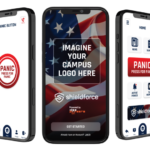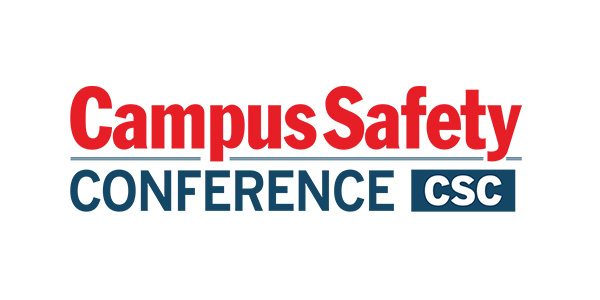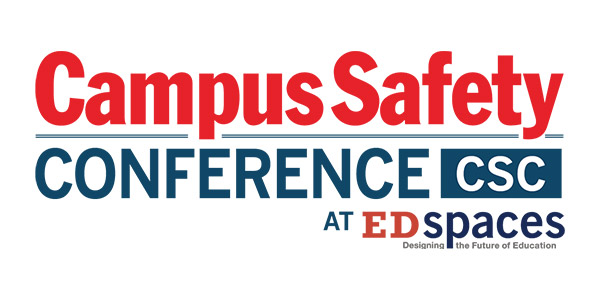Ah, Spring! It’s the unofficial start of the outdoor event and sports calendar on our campuses. It’s also the time of year when the alarms prompting severe weather planning and preparedness go off in administrative offices around the country. Even the National Weather Service (NWS) perpetuates this rite of passage by offering spring severe weather spotter training talks and partners with state emergency management agencies to observe severe weather awareness weeks across the nation. But, if you are looking for another “It’s tornado season, be prepared” article, this is not the article you are looking for.
By the first day of spring, the average number of tornadoes that have already occurred in the United States is nearly 200.
This we know for sure: tornado season starts on Jan. 1 and ends on Dec. 31. We observe tornadoes in each month of the year, and tornado fatalities are possible in every month. The same can be said for almost every other weather hazard. Even tropical storms and hurricanes have formed outside of the June to November months labeled by meteorologists as “hurricane season.”
When Are Tornadoes Most Common?
Although tornadoes are most common in the spring, according to the National Weather Service, life threatening weather hazards don’t abide by the notion of a “season.” In 2015, more people died in December tornadoes than in tornadoes from January through November combined. Likewise, snow and ice storms have resulted in weather fatalities outside of the traditional winter months of December, January and February. The most notable storms include the famed April Fool’s Day Blizzard of 1997, and an April blizzard in the western United States in 2015.
It is critical that campus weather preparedness plans and associated outreach and training eschew the seasonal approach. Every campus weather plan should begin with an inventory of each weather hazard that could occur, regardless of the time of year. This comprehensive approach will eliminate the loss of situational awareness and desensitization that can occur by making the assumption that certain weather hazards only happen during certain times of year.
It is also important to remember that many life-threatening weather hazards occur simultaneously. For example, storms that produce tornadoes typically deliver large hail, localized flooding, damaging straight-line winds and dangerous cloud-to-ground lightning.
Take a Weather Inventory
There are a vast number of resources available to campus emergency planners to comprehensively assess weather risk. Remember, when doing a campus weather plan, address both the weather risk as well as the vulnerability of each building/facility or activity to the weather risk.
For example, a building with no basement on the highest point of campus will likely be less susceptible to flooding than the building with the basement that sits next to the creek running through your campus. An outdoor campus activity for 50 people will require different weather notification and sheltering strategies than an event hosting 500 people. Weather plans cannot be one size fits all. Each activity or building on your campus is unique. Likewise, the weather plan for each will also require customization in order to be efficient and effective.
Although you will likely be very familiar with your campus buildings, you may not be as familiar with the diverse weather hazards that have impacted your area over the years. Here are the individuals or organizations that you can contact to help you with your weather planning research:
National Weather Service (NWS)
The NWS uses 122 local weather forecast offices to serve the United States. Each office is responsible for gathering weather observations and climate data, issuing local marine, aviation, fire and public weather forecasts, as well as issuing warnings for severe weather of all types. Each office is staffed with a warning coordination meteorologist (WCM). The WCM is responsible for planning and coordinating public awareness programs to ensure the mitigation of death, injury and property damage or loss due to weather. Contacting the local NWS WCM is the first step in creating a robust weather plan for your campus.
The path to contacting the local NWS WCM is fairly straightforward. Go to the NWS web page at www.weather.gov. Then, click on the county where your campus is located. That click will take you to the home page for your local NWS office. Once on your local NWS office web page, search for the “About Us,” “About Our Office” or “Office Information” menu link. That link will take you to the listing of office staff and the contact information for the WCM. The WCM is a critical local resource, and a wealth of information on local weather risks for your campus.
State Climatologist
Most states have a climate office or an office of the state climatologist. Each state climate office serves as a repository for weather and climate data, as well as the statistical risks for various weather phenomena. The office will house the state climatologist, who is the state’s expert on weather and climate hazards. He or she will have historical information on weather threats for the state, and these can be used as the basis for weather emergency planning.
To contact your state climatologist, go to the American Association of State Climatologists web site at www.stateclimate.org. Click on your state for specific contact information. If your state does not have a state climatologist, there are still additional resources that are available to you through state offices of emergency management.
State Emergency Management Office
State governments are required by the Federal Emergency Management Agency (FEMA) to have a hazard mitigation plan. The purpose of this plan is to identify natural hazards that occur in the state, as well as strategies to reduce losses from those hazards. In many instances, the weather sections of a state hazard mitigation plan can serve as a guide for your campus weather emergency plans. State hazard mitigation plans serve as a great orientation to the types of weather hazards that occur in your state.
To contact your state resource, search for the state hazard mitigation officer at your state government web site. If your state has an office of emergency preparedness or emergency management, their staff will also be available to help you with your weather emergency plans.
County, City, Local Emergency Management Director
The local emergency management community in the county or city where your campus resides is also a tremendous resource when it
comes to weather planning. Before finalizing the weather plans for your campus, visit with your local emergency management director to ensure that your plans and safety information are consistent with those of your surrounding community. Consistency of information is key, especially when quick action is necessary in the face of life threatening weather hazards.
Other Resources
When creating a campus weather emergency plan, it is important to understand how vulnerable your campus buildings are to weather. If you are looking at potential severe weather refuge areas in your buildings, it is helpful to engage structural engineers and architects in this effort. FEMA also has guidelines for tornado safe rooms here.
If you are worried about potential flooding, check with the U.S. Geological Survey for floodplain maps, or with your state floodplain managers association. FEMA also has flood maps and resources here.
As you create weather plans for campus activities and events, there are also great resources available to help guide you. The National Weather Service has a lightning tool kit that provides a step-by-step guide to developing a lightning plan. The tool kit is available here.
In addition, the Event Safety Alliance has created an Event Safety Guide, and in conjunction with the OU Office of Emergency Preparedness hosts an annual Severe Weather Summit for event organizers in Norman, Okla. Lastly, the National Center for Spectator Sports Safety and Security has a set of Best Practices guides. Planning for hazardous weather is a key component of these guides.
Weather Hazards Pose Year-Round Challenges
Awareness of and planning for hazardous weather shouldn’t depend on a calendar or a season. Campus weather hazard planning should account for every reasonable weather threat and assume that each of these threats can occur at any time. When creating weather plans, also remember that multiple weather hazards can and do occur simultaneously.
Once your weather hazard plans are complete, regular campus outreach efforts should be implemented to develop and maintain awareness of the threats. Your weather emergency plans should be part of all regular campus emergency preparedness education and drills.
Be persistent. It will take consistency and repetition to remove the false notion that specific weather hazards only occur at certain times of the year.
Dr. Kevin Kloesel is the university meteorologist for the University of Oklahoma’s Office of Emergency Preparedness.
NOTE: The views expressed by guest bloggers and contributors are those of the authors and do not necessarily represent the views of, and should not be attributed to, Campus Safety.
This article was originally published on April 6, 2016, but the recommended practices still apply.













